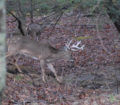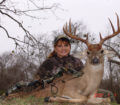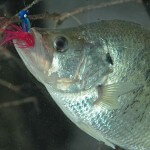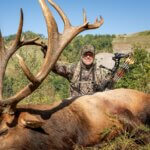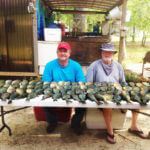Editor’s Note: Regardless of how long you’ve hunted or how safely you try to hunt, any time you leave the ground to attempt to take a deer, you may fall. Each time you go into a tree, you enter a danger zone. You must take every precaution possible to prevent an accident. Today’s tree stands have more safety features than any other tree stands in history. In most instances, a sportsman falls because he has made a mistake. However, even if you take every safety precaution, you still may fall if you ever let your guard down.
Tree stand-related fatalities occur each year, as well as lost-time injuries. Most of these fatalities and injuries may have been preventable if the hunters wore safety harnesses that include a chest strap and leg loops. Certain types of tree stands have accident written all over them. Most hunters in the know say that using homemade stands is the most dangerous – particularly those constructed of wood. When you drive nails through the center of wood, you split or weaken that wood. After a year or two, that wood begins to rot, as do the holes around the nails, causing the steps to be unsafe and to break away from the tree easily. Wooden steps and wooden ladders probably pose the biggest dangers to the tree stand hunter. Also if you build a wooden tree stand, you must realize the life of wooden tree stands generally is no more than one to two years, unless the stands are built of an expensive grade of marine plywood.
Tree steps themselves are not unsafe. But if you don’t attach the steps to the tree properly, an accident can occur. According to safety experts, for a screw-in type step to offer the safest passage from the ground to the tree, the step must be screwed all the way into the tree to make if flush against the tree. Generally hunters will screw the first two or three steps tightly into the tree. However, as they climb higher and become tired, they often don’t take those last two or three turns on the step to screw it all the way into the tree. Those steps can pull out when you put weight on them. Generally the steps most likely to break away from the tree will be the top steps, because the hunter has tired of screwing steps into the tree as he climbs towards his stand.
If you fall out of a tree when you use tree steps and fall away from the tree, you may not be hurt as badly as when you fall straight down beside the tree. When you fall down beside a tree with tree steps, those steps can catch rings or other jewelry, an arm or a leg and produce a nasty cut or possibly pull off body parts. Always take the extra time required to make sure that the last few steps at the top are as secure to the tree as the first step at the bottom.
Another problem associated with utilizing tree steps is you may shortchange yourself on the number of steps you screw into a tree. You may use only enough steps to allow you to climb to your stand. Then from the last step, you may come from below your stand to try and get into the stand. When you approach a tree stand from below or from the side of the stand, the chances of pushing the stand away from the tree are much greater than if you come from above the stand and step down into it. If you’ll use two to three more tree steps to climb above the stand to enable you to step down into your stand, the likelihood of an accident generally will be reduced.
Many states require rope-on or belt-on types of tree steps, instead of the screw-in kind to prevent damaging the tree. These belt-on steps can be safer than the screw-in type. However, you still must remember when you’re attaching the steps to the tree to make sure the rope holding the step is parallel to the ground. Also pull the step securely to the tree with no slack in the rope. If slack is in the rope, the step can slide down the tree when weight is applied to it. No matter what type of step you utilize to climb into your tree stand, always attach and wear a safety harness. If you walk out onto the end of the stand and rock the stand back and forth to be certain the stand is stable against the tree before you attach your safety harness, you may take an unexpected express ride to the bottom of the tree.
Climbing tree stands generally are much safer than tree steps and fixed stands because you are less exposed to danger. The climbing stands that surround the hunter in some type of metal cage are the safest of all. However, you still must take safety precautions. When you fasten a climbing tree stand to the tree, you must realize that most trees are bell-shaped – larger at the bottom than at the top. When you attach the seat and the platform, make sure both parts of the stand are leaning into the tree slightly. The more tapered the tree is, the more you should have the tree stand leaning into the tree before you start your climb.
Although when the words, ”tree stands accidents,” are heard most of us think of someone falling from a great height to the ground, some accidents occur at less than three feet off the ground. A hunter may fall out of a climbing tree stand when he’s attaching the ropes or the bungee cords to his feet to enable him to pull the stand up as he climbs. When you’re standing up in a tree stand trying to attach foot straps, you’re in an awkward position. Falling can be easy. Once you attach the straps to your feet, always be seated in the stand first to greatly reduce your chance for accidents. And, always put on a safety harness with a chest strap and leg loops before you even begin to climb. Statistics have proven that safety harnesses can prevent as many if not more accidents for hunters as seat belts do for drivers of automobiles.
Before you start to climb the tree in a climbing tree stand, attach your safety harness to the tree. Then you’re always secure to the tree from the time you leave the ground. Once you arrive at the desired height, either use the strap securing your feet to the bottom platform, or carry a piece of rope to tie the seat climber to the bottom platform. Then if the bottom half of the stand comes loose from the tree and falls, it can’t fall any further than the length of rope you have attached to it. Also this bottom platform can be retrieved easily to allow you to come down the tree safely. If and when you stand in the tree stand, make sure your safety harness is attached snugly.
The safest type of ladder stands are the ones with a brace about six feet up in the middle of the ladder to brace the center of the ladder to the tree. This brace usually can be secured to the tree before you begin to climb the ladder. Also have a strap or a chain at the top of the ladder stand to secure the stand to the tree. Many hunters like a ladder tree stand that has a belt and ratchet system to allow them to not only secure a ladder type stand to the tree but also actually pull the stand in tighter to the tree and make the stand more secure. Remember to already have your safety harness attached to the tree to prevent your possibly falling from the ladder.
To learn more about hunting deer with John E. Phillips’ Amazon Kindle eBooks, print books and Audible books (the latest Audible is “How to Hunt Deer Like a Pro”) and Nook books, click here at https://johninthewild.com/books/#deer. You can type in the name of the book and download it to your Kindle, and/or download a Kindle app for your iPad, SmartPhone or computer. For a free download on how to make jerky from venison to provide a protein-rich snack, choose “How to Prepare Venison Jerky: The Ultimate Snack Food” at johninthewild.com/free-books.

